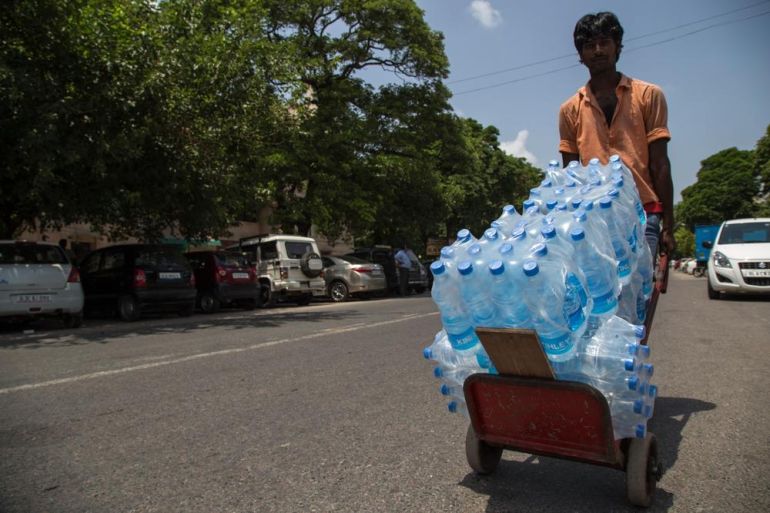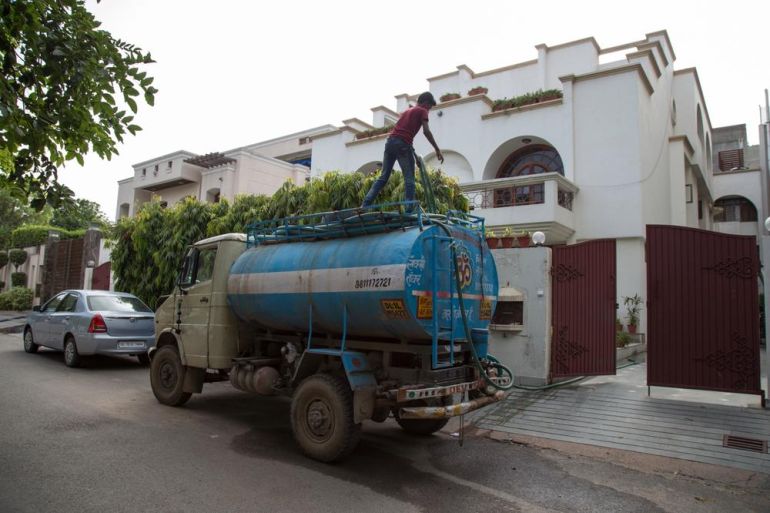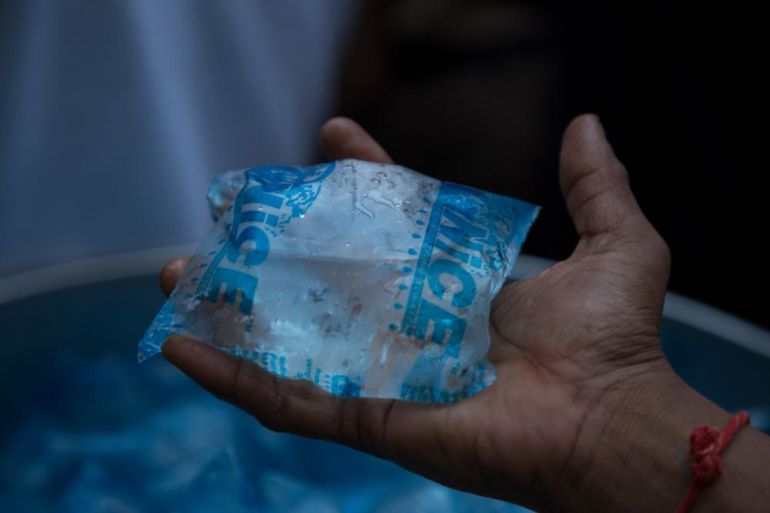In Pictures
In Pictures: India’s water crisis deepens
As Global Water Week kicks off in Stockholm, world’s second most populous city, New Delhi fights for water every day.

New Delhi, India – For Vishal Agnihotri, 33, a rickshaw puller in the Dwarka neighbourhood here in the capital, the Global Water Week that kicked off on Sunday in Sweden and the ice bucket challenge craze means nothing.
“I haven’t had a bath for the last four days. We don’t have water for drinking; forget taking a bath in ice cold water,” he told Al Jazeera.
New Delhi, a union territory and the capital of India became the world’s second most populous city this year after Tokyo, more than doubling its population since 1990 to 25 million, according to the latest UN report. The city is expected to retain this spot until 2030, when its population is expected to rise swiftly to 36 million, the report says.
But does the city have enough drinking water for its bulging population?
Currently the demand for potable water is around 1,100 mgd (million gallons per day) but the government only supplies around 800 mgd. About 81 percent of the households get piped water. The rest of the population relies on mobile water tankers.
Last year the Delhi government even had to insist that 35 five-star hotels cut down their consumption.
With no ensured timely distribution of water to the inhabitants at many places, the water mafia has taken over.
“Government is the biggest problem. It doesn’t plan water resources,” Himanshu Thakkar, coordinator with the New Delhi-based South Asia Network on Dams, Rivers and People, told Al Jazeera.
That’s why in this water-hungry city, a parallel water industry is flourishing despite tough measures taken by the Delhi Jal Board (DJB) which is responsible for maintaining Delhi’s water supply.
“The water mafia will work when there is a scarcity of water. It’s because of the unequal distribution of the water by the authorities. People who need water anyways see a solution in water tankers,” Dewan Singh, an environmentalist at Natural Heritage First told Al Jazeera.
It’s estimated that more than 2,000 private tankers draw water from tube wells and the DJB connection and sell the water to residential localities and industries at exorbitant rates. This industry earns an estimated 400 crores ($66.15m) annually.
Water tanker rates differ on the basis of capacity, season and demand, and in some cases, the customer.
Almost half of Delhi’s population lives in slums where getting water is a challenge every day.
Follow Baba Tamim on Twitter: @babatamim













